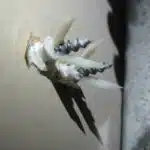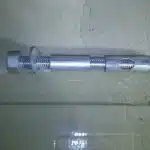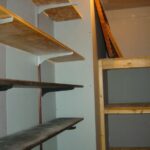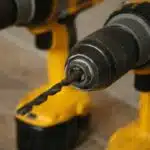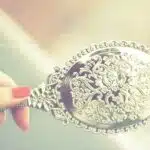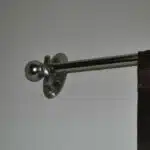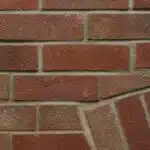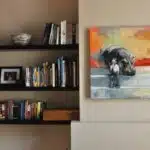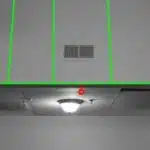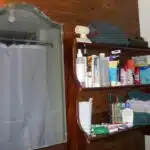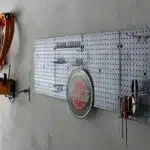Decorative shelves are a great way to add personality and functionality to any room in your home. However, properly installing these shelves can be a challenge for those who lack experience in home improvement projects. One crucial aspect of hanging a decorative shelf is ensuring that it is securely anchored to the wall. In this article, we will provide step-by-step instructions on how to hang a decorative shelf using wall anchors.
Wall anchors are critical components in ensuring that your shelf stays firmly and safely attached to the wall. Without them, your shelf may not be able to withstand the weight of objects placed on it or may become unstable over time. We will walk you through the process of selecting the right type of anchor for your specific shelf and wall type, as well as guide you through the installation process itself. By following our instructions, you’ll have a stylish and functional shelf that’s both safe and secure.
Assessing Your Wall Type
Before hanging a decorative shelf, it’s crucial to assess your wall type. Different types of walls require different types of anchors and screws to properly secure the shelf. If you have a drywall or plaster wall, for instance, using regular nails or screws won’t be enough to hold up your shelf. Instead, you’ll need to use wall anchors.
To find studs behind your drywall or plaster wall, you can use a stud finder. Studs are vertical wooden beams that support your wall and provide a strong base for hanging shelves and other heavy items. A stud finder is a handheld device that detects the location of studs within your wall. Once you’ve located the studs, you’ll want to mark them with a pencil so that you know where they are when it comes time to hang your shelf.
If your walls are made of brick or concrete, finding studs won’t be necessary since these materials provide a sturdy base for hanging shelves without additional support. However, you’ll still need to use appropriate anchors and screws designed for these materials. Regardless of what type of wall you have, taking the time to assess it beforehand will ensure that your decorative shelf stays securely in place over time.
With the right tools and approach, hanging a decorative shelf is an effective way to add both practicality and style to any room in your home. Now that we’ve discussed how to assess your wall type and locate studs (if applicable), we can move on to selecting the right shelf for your space based on size, style, and function.
Selecting The Right Shelf For Your Space
Are you looking to add some decorative flair to your living space? A shelf may be just the thing you need. However, selecting the right one can be a daunting task, especially if you are not familiar with the various styles and materials available on the market. Fear not, as we will guide you through this process to help you make an informed decision.
Choosing the right style is crucial when it comes to selecting a shelf. Do you want something modern or traditional? Rustic or industrial? The style of your shelf should complement your existing décor and furniture. If you prefer a minimalist look, opt for a simple design that blends in seamlessly with its surroundings. Meanwhile, if you want to create a focal point in your room, choose a statement piece that draws attention.
Matching colors and materials is equally important when it comes to selecting a shelf. Consider what materials would best suit your space – wood, metal or glass? Additionally, match the color of your shelf with other elements in the room such as walls, curtains or rugs. This helps create a cohesive look that ties everything together.
- Determine what items will be displayed on the shelf
- Measure the dimensions of the wall where the shelf will be installed
- Consider weight capacity of different shelves
- Choose between floating or bracketed shelves
Now that you have selected the perfect shelf for your space let’s move on to measuring and marking your wall.
Measuring And Marking Your Wall
Once you have selected the right shelf for your space, it’s time to move on to the next step: measuring and marking your wall. Before you begin, make sure you have all the necessary tools: a measuring tape, pencil, level, and wall anchors.
Using a level is essential when hanging shelves. If your shelf isn’t level, it won’t look good and won’t be functional. Start by determining where you want to hang your shelf. Use a measuring tape to measure the height of where you want the bottom of your shelf to be. Then use a level to draw a horizontal line on the wall at that height.
Finding studs is important when hanging heavier shelves or multiple shelves in one area. Use a stud finder or knock on the wall until you hear a solid sound instead of a hollow one. Once you’ve found your studs, mark their location with an X using your pencil. If you’re hanging multiple shelves in one area, make sure they are evenly spaced apart and use the same process for finding studs and marking their location with an X.
Determining the placement of your shelf is crucial before drilling any holes into your wall. Take into consideration any furniture or fixtures below or above where you want to hang your shelf and make sure it won’t interfere with them. Once you have determined the placement, mark where each screw will go using your pencil and check that each mark lines up with either a stud or wall anchor. Now that you’ve marked everything out, it’s time to move onto installing those wall anchors!
Determining The Placement Of Your Shelf
Before hanging your decorative shelf, it’s important to consider the placement of the shelf. A poorly placed shelf can detract from the overall aesthetic of a room and create visual imbalance. Here are some tips for achieving visual balance when incorporating a new shelf into your existing decor:
Consider the height: When determining where to hang your decorative shelf, take into account the height of other items in the room. You don’t want your shelf to be too high or too low compared to other elements in the space.
Look for symmetry: If you’re hanging multiple shelves, try to create symmetry by spacing them evenly and keeping them at similar heights.
Use color wisely: The color of your new shelf should complement and enhance the colors already present in your room. Avoid choosing a color that clashes with your existing decor.
Incorporating a new decorative shelf into an existing space is all about finding balance. By taking time to carefully consider its placement, you can ensure that it adds value and doesn’t detract from your home’s overall aesthetic.
When choosing the right anchor type for your decorative shelf, it’s important to consider both weight capacity and wall material. In our next section, we’ll explore some common types of wall anchors and how they work with different materials.
Choosing The Right Anchor Type
After determining the perfect location for your decorative shelf, it’s time to anchor it securely to the wall. Anchoring your shelf not only adds an aesthetic appeal but also ensures that it can hold the weight of your items without falling off or damaging the wall. Benefits of anchoring include preventing accidents and making sure that your shelf is stable enough to hold objects.
When choosing an anchor type, consider the weight of your shelf and its contents. Common anchor materials include plastic anchors, metal anchors, and toggle bolts. Plastic anchors are suitable for lightweight shelves, while metal anchors are ideal for medium-weight shelves. Toggle bolts are best for heavy-duty shelves as they can support a considerable amount of weight.
Before gathering the necessary tools to install your anchor, make sure you have chosen the right anchor type based on the weight of your shelf. Having the correct type ensures that your shelf stays securely in place without causing any safety hazards or damage to walls. With this in mind, let’s move on to the next section about selecting the appropriate tools needed for hanging a decorative shelf with wall anchors.
Gathering The Necessary Tools
Choosing the right hardware is crucial when hanging a decorative shelf using wall anchors. It is important to choose the correct size and weight capacity of the anchor and screw that will support your shelf. Make sure to read the packaging of both the anchor and screw carefully to ensure they are compatible with each other and can hold the weight of your shelf.
Tips for beginners include starting with a smaller, lighter shelf before moving on to larger and heavier ones. This will give you an opportunity to practice using wall anchors and gain confidence in your abilities before tackling a more challenging project. Another helpful tip is to mark where you want to hang your shelf with a pencil before drilling any holes, ensuring that it is level and centered.
In order to gather the necessary tools, you will need wall anchors, screws, a drill, a drill bit, a level, a pencil, and a measuring tape. Once you have chosen the right hardware for your project and gathered all necessary tools, it is time to prepare your anchor and drill.
Preparing Your Anchor And Drill
- When hanging a decorative shelf, it is important to choose the right anchor for the job depending on the weight of the shelf and the type of material the wall is made of.
- Once the anchor has been selected, the next step is to drill pilot holes for the anchor.
- The size of the drill bit should match the size of the anchor and the depth of the holes should be slightly deeper than the anchor’s length.
- After the holes have been drilled, the anchor should be inserted by tapping it gently with a hammer to ensure that it is firmly secured in the wall.
- Depending on the type of anchor, it may be necessary to use a setting tool to expand the anchor inside the wall for a secure fit.
- Once the anchor is in place, the decorative shelf can be hung using the appropriate screws.
Choosing The Right Anchor
Are you wondering how to hang a decorative shelf using wall anchors? One of the most important steps in this process is choosing the right anchor. The weight and material of your anchor will determine its holding strength, which is essential for ensuring that your shelf remains securely attached to the wall.
When selecting an anchor, consider the weight of your decorative shelf and any items that will be placed on it. This will help you choose an anchor with a suitable weight capacity. The packaging on anchors typically includes information about their weight limits, so be sure to read this carefully before making your selection.
The material of your wall will also impact the type of anchor you should use. If you have drywall, for example, you’ll need a different type of anchor than if you have concrete or brick. Be sure to choose an anchor that is compatible with your wall material to ensure optimal holding strength. With these considerations in mind, you’ll be well on your way to preparing your anchor and drill for hanging your decorative shelf with confidence.
Drilling Pilot Holes
Now that you’ve chosen the right anchor for your decorative shelf, it’s time to prepare your drill for installation. One crucial step in this process is drilling pilot holes before installing the anchor. Pilot holes are small guide holes that help prevent the screw from splitting the wood or damaging the wall during installation. They also allow for easier insertion of the screw, reducing the risk of stripping or over-tightening.
Drilling pilot holes may seem like an easy task, but there are some common mistakes to avoid. One such mistake is failing to lubricate the drill bit before use. Lubrication helps reduce friction and heat buildup during drilling, which can cause the bit to wear out faster or even break off inside the hole. Another mistake is using too much force when drilling, which can cause the bit to slip and damage surrounding areas. It’s essential to use a steady hand and apply gentle pressure when drilling pilot holes.
Overall, drilling pilot holes is a crucial step in preparing your anchor and drill for hanging a decorative shelf securely. By choosing a suitable anchor and avoiding common mistakes during installation, you can ensure optimal holding strength and minimize damage to your walls or shelf. With these tips in mind, you’ll be well on your way to completing this DIY project with confidence.
Inserting The Anchor
Now that you’ve drilled the pilot holes, it’s time to insert the anchor. Before doing so, ensure that you have chosen the correct anchor size for your decorative shelf and wall type. Different materials require different types of anchors, so make sure to check the packaging or consult with a hardware expert if you’re unsure.
To insert the anchor, simply place it into the pilot hole and tap it gently with a hammer until it is flush with the surface of the wall. Be careful not to hit it too hard, as this could cause damage to the surrounding area. Once inserted, you can then screw in your decorative shelf bracket or hook into the anchor.
It’s important to note that some anchors may require additional steps for installation, such as twisting or expanding them with pliers. Always follow the manufacturer’s instructions carefully and ask for assistance if needed. By properly installing your anchor, you can ensure a secure hold for your decorative shelf and prevent any accidents or damage from occurring.
Making The Pilot Hole
Preparation is key when it comes to hanging a decorative shelf on the wall. One of the most important steps in the process is making a pilot hole for the wall anchor. This ensures that the anchor goes in straight and stays firmly in place, preventing any accidents or damage to your walls.
Choosing the right drill is crucial for making a clean and precise pilot hole. It’s recommended to use a drill that matches the size of your wall anchor. For instance, if you’re using a 1/4-inch wall anchor, use a 1/4-inch drill bit. This will help prevent any splitting or cracking of your walls during installation.
There are several types of wall anchors available, each with their own unique features and uses. Some popular options include plastic expansion anchors, toggle bolts, and metal sleeve anchors. Consider factors like the weight of your shelf and the type of wall you have when choosing which type to use. Always follow manufacturer instructions for best results.
Once you’ve chosen the right drill and wall anchor, it’s time to make your pilot hole. Remember to measure twice and mark once before drilling, as accuracy is key in this step. With your pilot hole made, you can now move on to inserting the anchor into your wall – but we’ll cover that in our next section!
Inserting The Anchor
To insert the anchor, you will need to first determine the appropriate size of anchor to use. This is determined by the weight capacity of the shelf and the thickness of your wall. A general rule of thumb is to use an anchor that is rated for at least twice the weight of the shelf. Additionally, it’s important to choose an anchor with a depth that matches the thickness of your wall.
Once you have selected an appropriate anchor, mark where you want to place it on the wall. Use a power drill with a bit that matches the size of your chosen anchor to drill a hole into the marked spot. Be sure to drill straight into the wall and not at an angle, as this can affect how securely the anchor holds.
After drilling your hole, gently tap in your chosen anchor until it sits flush with the surface of your wall. It’s important not to over-tap or force it into place, as this can damage both the anchor and your wall. Once in place, you’re now ready for affixing the bracket to the wall and attaching your decorative shelf.
Affixing The Bracket To The Wall
After inserting the anchor, the next step is to affix the bracket to the wall. When it comes to decorative shelves, there are various types of brackets available in the market. Some common ones include L-brackets, J-brackets, and floating brackets. Choose a bracket that complements your shelf and suits your interior style.
Before mounting the bracket, make sure you have chosen the right spot on the wall. You can use a leveler to ensure that the bracket is straight. Once you have identified the spot, mark it with a pencil so that you can easily align the bracket with it later. There are alternative methods for mounting brackets such as using adhesive tapes or suction cups, but these may not be sturdy enough for heavy shelves.
In order to secure the shelf to the bracket, place it on top of the bracket and insert screws through pre-drilled holes in both parts. Use a screwdriver or drill to fasten them tightly together. Before placing any items on your new shelf, give it a gentle tug to ensure that it is securely attached to the wall. Now you can enjoy your newly installed decorative shelf!
Next up is organizing your items on your new shelf!
Securing The Shelf To The Bracket
To secure the shelf to the bracket, first ensure that the bracket is securely attached to the wall using wall anchors. Once you have confirmed that the bracket is in place, carefully place the shelf onto the bracket. Adjusting height is easily done by sliding the shelf up or down on the bracket until it is at your desired height.
It is important to note that weight capacity should be taken into consideration when hanging a decorative shelf. Be sure to check the weight limit of both your bracket and your wall anchors before placing any items on your new shelf. Overloading a shelf beyond its weight capacity can not only damage your wall but also result in dangerous accidents.
By following these steps, you can successfully hang a decorative shelf using wall anchors and brackets. The next step is checking for levelness to ensure that your new addition looks professional and polished in your space.
Checking For Levelness
When hanging a decorative shelf, it is important to check for levelness. Measuring levelness requires the use of a level tool to ensure the shelf is hanging at a horizontal angle. Once levelness is established, the next step is to mark the wall anchor locations accordingly. For best results, use a pencil to mark the location of the wall anchor so the wall is not damaged during installation.
Measuring Levelness
Hanging decorative shelves can be a great way to spruce up your living space. However, if you don’t hang them level, they can look crooked and unprofessional. To ensure that your shelf is level, you’ll need to use a level and take some measurements.
Using a level is an essential tool when it comes to hanging shelves. It allows you to determine whether or not the shelf is straight and even. Before you start drilling any holes, place the level on top of the shelf to ensure it’s flush with the wall. If it’s not, adjust accordingly until it’s level.
One of the most common hanging mistakes people make is not measuring for levelness. This can lead to uneven shelves and items falling off. Take your time and measure accurately before drilling any holes. Remember, it’s better to double-check than have to redo everything later on!
Marking Wall Anchor Locations
To ensure that hanging decorative shelves are not only leveled but also securely mounted, it’s essential to mark the wall anchor locations accurately. Using a tape measure, measure the distance between the shelf brackets and mark them on the wall using a pencil. Make sure to locate studs within the bracket range, as they provide extra support for heavier items.
Finding studs can be done by tapping the wall with a hammer and listening for a solid sound indicating wood beneath. Alternatively, stud finders are available at most hardware stores for more precise locating. Marking where the studs are located on your wall will help you avoid drilling into them while mounting your shelves.
Once you’ve marked both bracket locations and stud positions, use an anchor drill bit to make pilot holes in your markings. Then screw in your anchors before attaching brackets and securing your shelf onto the wall. Double-checking everything from levelness to weight capacity before loading up with decorative objects or books makes for a beautiful addition to any room.
Adding Decorative Touches
After ensuring that your shelf is level, it’s time to hang it using wall anchors. Wall anchors are essential for holding up heavier objects and providing extra support. They come in various types, including toggle bolts, plastic anchors, and metal sleeve anchors.
To hang your decorative shelf using wall anchors, follow these steps:
- Choose the appropriate type of anchor based on the weight of your shelf and the type of wall you have.
- Use a drill to make a hole where you want to place the anchor.
- Insert the anchor into the hole until it sits flush with the wall.
- Screw in the screw until it’s snug but not too tight.
DIY decor ideas are often budget-friendly options for sprucing up your home without breaking the bank. A decorative shelf is an excellent addition to any room and can be customized to fit your style and needs. Whether you’re looking for extra storage or a place to display your favorite items, installing a shelf with wall anchors is a simple yet effective way to achieve that.
Maintaining your shelf is crucial for its longevity and safety. Make sure to regularly inspect it for any signs of wear or damage, and clean it as needed with a damp cloth or mild cleaning solution. With proper care, your decorative shelf will continue to add charm and functionality to your living space for years to come.
Maintaining Your Shelf
Did you know that properly maintaining your decorative shelf can extend its lifespan by up to 50%? With just a few simple cleaning tips and repairing damages as soon as they occur, you can keep your shelf looking like new for years to come.
To start, it’s important to clean your shelf regularly. Dust and dirt can accumulate quickly on decorative shelves, making them look dull and unappealing. To avoid this, use a soft cloth or duster to wipe down the surface of the shelf at least once a week. For tougher stains or grime buildup, mix a solution of warm water and mild soap and gently scrub the affected area with a soft-bristled brush. Be sure to dry the shelf thoroughly with a clean cloth afterwards.
In addition to regular cleaning, it’s also essential to repair any damages to your shelf as soon as they occur. Small cracks or chips in the wood or finish can quickly worsen if left untreated, potentially causing irreparable damage. If you notice any scratches or dings in your shelf, fill them in with wood filler or touch-up paint that matches the original color of the shelf. This will not only improve its appearance but also prevent further damage from occurring.
As important as maintenance is, sometimes problems may still arise even with proper care. In the next section, we’ll troubleshoot some common issues that may occur with your decorative shelf and offer solutions on how to fix them.
Troubleshooting Common Problems
Dealing with weight limitations is an important aspect of hanging decorative shelves using wall anchors. Wall anchors come in different sizes and shapes, and each type has a specific weight capacity that it can hold. It is crucial to check the weight limit of the wall anchor before purchasing it. Overloading an anchor can cause it to fail, resulting in damage to the wall, shelf, or any items placed on the shelf.
Fixing loose anchors is another common problem encountered when hanging decorative shelves using wall anchors. Loose anchors can cause the shelf to become unstable and even fall off the wall. To fix a loose anchor, remove the screw and anchor from the wall and fill the hole with spackle or drywall compound. Once dry, insert a new anchor into the hole and screw it in tightly.
It is essential to ensure that your decorative shelf is secure before placing any items on it. By following these tips for dealing with weight limitations and fixing loose anchors, you can prevent accidents and keep your decorative shelves in top condition for years to come. Remember always to use appropriate hardware for your particular shelving system, follow manufacturer instructions carefully, and never exceed weight limits specified by manufacturers or distributors.
Conclusion
When it comes to adding decorative shelving to your home, there are a few important steps to consider. Firstly, assessing your wall type is crucial in determining the appropriate anchor type needed for support. Selecting the right shelf for your space and measuring and marking your wall accurately are also key factors in ensuring a successful installation.
Once you have determined the placement of your shelf, choosing the right anchor type and checking for levelness are essential. Adding decorative touches such as plants or books can enhance the overall aesthetic of your new shelving unit. Lastly, maintaining your shelf by regularly cleaning and checking for any potential issues will ensure longevity.
By following these steps, you can hang a decorative shelf with ease and confidence. Remember to troubleshoot any common problems that may arise during installation and enjoy the new addition to your home. With proper planning and execution, you can transform any wall into a functional and stylish display space.
Image Credits
- “Anchored wall” by Eurico Zimbres (featured)


